The Impact Resistance and Deformation Performance of Novel Pre-Packed Aggregate Concrete Reinforced with Waste Polypropylene Fibres
Abstract
1. Introduction
2. Materials and Methods
2.1. Materials
2.2. Mix Proportions
2.3. Sample Preparation
2.4. Testing Methods
3. Results and Discussion
3.1. Grout Fluidity
3.2. Compressive Strength
3.3. Impact Resistance and Energy Absorption
3.4. Long-Term Drying Shrinkage
3.5. Microstructural Analysis
4. Statistical and Analytical Analyses
5. Conclusions
Author Contributions
Funding
Acknowledgments
Conflicts of Interest
References
- Najjar, M.F.; Soliman, A.M.; Nehdi, M.L. Critical overview of two-stage concrete: Properties and applications. Constr. Build. Mater. 2014, 62, 47–58. [Google Scholar] [CrossRef]
- Awal, A. Creep Recovery of Prepacked Aggregate Concrete. J. Mater. Civ. Eng. 1992, 4, 320–325. [Google Scholar] [CrossRef]
- Abdelgader, H.S. How to design concrete produced by a two-stage concreting method. Cem. Concr. Res. 1999, 29, 331–337. [Google Scholar] [CrossRef]
- Awal, A.S.M.A. Manufacture and Properties of Pre-Packed Aggregate Concrete. Master’s Thesis, University of Melbourne, Melbourne, Australia, 1984. [Google Scholar]
- Swaddiwudhipong, S.; Zhang, J.; Lee, S.L. Prepacked Grouting Process in Concrete Construction. J. Mater. Civ. Eng. 2003, 15, 567–576. [Google Scholar] [CrossRef]
- Mohammadhosseini, H.; Awal, A.S.M.A.; Sam, A.R.M. Mechanical and thermal properties of prepacked aggregate concrete incorporating palm oil fuel ash. Sādhanā 2016, 41, 1235–1244. [Google Scholar] [CrossRef]
- Najjar, M.F.; Nehdi, M.; Soliman, A.; Azabi, T. Damage mechanisms of two-stage concrete exposed to chemical and physical sulfate attack. Constr. Build. Mater. 2017, 137, 141–152. [Google Scholar] [CrossRef]
- Murali, G.; Ramprasad, K. A feasibility of enhancing the impact strength of novel layered two stage fibrous concrete slabs. Eng. Struct. 2018, 175, 41–49. [Google Scholar] [CrossRef]
- Abdelgader, H.S.; Elgalhud, A.A. Effect of grout proportions on strength of two-stage concrete. Struct. Concr. 2008, 9, 163–170. [Google Scholar] [CrossRef]
- American Concrete Institute. ACI 304.1. Guide for the Use of Preplaced Aggregate Concrete for Structural and Mass Concrete Applications; ACI Committee: Farmington Hills, MI, USA, 2005. [Google Scholar]
- Mohammadhosseini, H.; Tahir, M.M.; Alaskar, A.; Alabduljabbar, H.; Alyousef, R. Enhancement of strength and transport properties of a novel preplaced aggregate fibre reinforced concrete by adding waste polypropylene carpet fibres. J. Build. Eng. 2020, 27, 101003. [Google Scholar] [CrossRef]
- Mohammadhosseini, H.; Awal, A.S.M.A. Physical and mechanical properties of concrete containing fibres from industrial carpet waste. Int. J. Res. Eng. Technol. 2013, 2, 464–468. [Google Scholar]
- Song, P.S.; Hwang, S. Mechanical properties of high-strength steel fibre-reinforced concrete. Constr. Build. Mater. 2004, 18, 669–673. [Google Scholar] [CrossRef]
- Abirami, T.; Loganaganandan, M.; Murali, G.; Fediuk, R.; Sreekrishna, R.V.; Vignesh, T.; Januppriya, G.; Karthikeyan, K. Experimental research on impact response of novel steel fibrous concretes under falling mass impact. Constr. Build. Mater. 2019, 222, 447–457. [Google Scholar] [CrossRef]
- Alyousef, R.; Mohammadhosseini, H.; Alrshoudi, F.; Alabduljabbar, H.; Mohamed, A.M. Enhanced Performance of Concrete Composites Comprising Waste Metalised Polypropylene Fibres Exposed to Aggressive Environments. Crystals 2020, 10, 696. [Google Scholar] [CrossRef]
- Ramkumar, V.R.; Murali, G.; Asrani, N.P.; Karthikeyan, K. Development of a novel low carbon cementitious two stage layered fibrous concrete with superior impact strength. J. Build. Eng. 2019, 25, 100841. [Google Scholar] [CrossRef]
- Mohammadhosseini, H.; Awal, A.A.; Yatim, J.M. The impact resistance and mechanical properties of concrete reinforced with waste polypropylene carpet fibres. Constr. Build. Mater. 2017, 143, 147–157. [Google Scholar] [CrossRef]
- Awal, A.S.M.A.; Mohammadhosseini, H. Green concrete production incorporating waste carpet fibre and palm oil fuel ash. J. Clean. Prod. 2016, 137, 157–166. [Google Scholar] [CrossRef]
- Mastali, M.; Dalvand, A.; Sattarifard, A. The impact resistance and mechanical properties of the reinforced self-compacting concrete incorporating recycled CFRP fibre with different lengths and dosages. Compos. Part B Eng. 2017, 112, 74–92. [Google Scholar] [CrossRef]
- Ong, K.; Basheerkhan, M.; Paramasivam, P. Resistance of fibre concrete slabs to low velocity projectile impact. Cem. Concr. Compos. 1999, 21, 391–401. [Google Scholar] [CrossRef]
- Mohammadhosseini, H.; Yatim, J.M.; Sam, A.R.M.; Awal, A.A. Durability performance of green concrete composites containing waste carpet fibers and palm oil fuel ash. J. Clean. Prod. 2017, 144, 448–458. [Google Scholar] [CrossRef]
- Wang, Y. Fibre and textile waste utilisation. Waste Biomass Valoris. 2010, 1, 135–143. [Google Scholar] [CrossRef]
- Mohammadhosseini, H.; Tahir, M.M.; Sam, A.R.M.; Lim, N.H.A.S.; Samadi, M. Enhanced performance for aggressive environments of green concrete composites reinforced with waste carpet fibres and palm oil fuel ash. J. Clean. Prod. 2018, 185, 252–265. [Google Scholar] [CrossRef]
- Mohammadhosseini, H.; Alyousef, R.; Lim, N.H.A.S.; Tahir, M.M.; Alabduljabbar, H.; Mohamed, A.M.; Samadi, M. Waste metalised film food packaging as low cost and ecofriendly fibrous materials in the production of sustainable and green concrete composites. J. Clean. Prod. 2020, 258, 120726. [Google Scholar] [CrossRef]
- Alrshoudi, F.; Mohammadhosseini, H.; Tahir, M.M.; Alyousef, R.; Alghamdi, H.; Alharbi, Y.R.; AlSaif, A. Sustainable Use of Waste Polypropylene Fibers and Palm Oil Fuel Ash in the Production of Novel Prepacked Aggregate Fiber-Reinforced Concrete. Sustainability 2020, 12, 4871. [Google Scholar] [CrossRef]
- Lim, S.K.; Tan, C.S.; Lim, O.Y.; Lee, Y.L. Fresh and hardened properties of lightweight foamed concrete with palm oil fuel ash as filler. Constr. Build. Mater. 2013, 46, 39–47. [Google Scholar] [CrossRef]
- Mohammadhosseini, H.; Lim, N.H.A.S.; Tahir, M.M.; Alyousef, R.; Samadi, M.; Alabduljabbar, H.; Mohamed, A.M. Effects of Waste Ceramic as Cement and Fine Aggregate on Durability Performance of Sustainable Mortar. Arab. J. Sci. Eng. 2019, 45, 3623–3634. [Google Scholar] [CrossRef]
- Tangchirapat, W.; Khamklai, S.; Jaturapitakkul, C. Use of ground palm oil fuel ash to improve strength, sulfate resistance, and water permeability of concrete containing high amount of recycled concrete aggregates. Mater. Des. 2012, 41, 150–157. [Google Scholar] [CrossRef]
- Chandara, C.; Azizli, K.A.M.; Ahmad, Z.A.; Hashim, S.F.S.; Sakai, E. Heat of hydration of blended cement containing treated ground palm oil fuel ash. Constr. Build. Mater. 2012, 27, 78–81. [Google Scholar] [CrossRef]
- Wilsdon, B.H. Discrimination by Specification Statistically Considered and Illustrated by the Standard Specification for Portland Cement. Suppl. J. R. Stat. Soc. 1934, 1, 152. [Google Scholar] [CrossRef]
- American Society for Testing and Materials. ASTM C618. Standard Specification for Coal Fly Ash and Raw or Calcined Natural Pozzolan for Use in Concrete; American Society for Testing and Materials: Philadelphia, PA, USA, 2015. [Google Scholar]
- British Standard. BS 3892-1. Pulverised-Fuel Ash Part 1. Specification for Pulverised-Fuel Ash for Use with Portland Cement; British Standard: Herndon, VA, USA, 1997. [Google Scholar]
- American Society for Testing and Materials. ASTM C939. Standard Test Method for Flow of Grout for Preplaced-Aggregate Concrete (Flow Cone Method); American Society for Testing and Materials: Philadelphia, PA, USA, 2016. [Google Scholar]
- American Society for Testing and Materials. ASTM C39. Standard Test Method for Compressive Strength of Cylindrical Concrete Specimens; American Society for Testing and Materials: Philadelphia, PA, USA, 2018. [Google Scholar]
- American Society for Testing and Materials. ASTM C512. Standard Test Method for Creep of Concrete in Compression; American Society for Testing and Materials: Philadelphia, PA, USA, 2010. [Google Scholar]
- American Concrete Institute. ACI 544.2R. Measurement of Properties of Fiber Reinforced Concrete; ACI Committee: Farmington Hills, MI, USA, 1999. [Google Scholar]
- Mohammadhosseini, H.; Alyousef, R.; Lim, N.H.A.S.; Tahir, M.M.; Alabduljabbar, H.; Mohamed, A.M. Creep and drying shrinkage performance of concrete composite comprising waste polypropylene carpet fibres and palm oil fuel ash. J. Build. Eng. 2020, 30, 101250. [Google Scholar] [CrossRef]
- Alrshoudi, F.; Mohammadhosseini, H.; Tahir, M.M.; Alyousef, R.; Alghamdi, H.; Alharbi, Y.; Alsaif, A. Drying shrinkage and creep properties of prepacked aggregate concrete reinforced with waste polypropylene fibres. J. Build. Eng. 2020, 32, 101522. [Google Scholar] [CrossRef]
- Lim, N.H.A.S.; Mohammadhosseini, H.; Tahir, M.M.; Samadi, M.; Sam, A.R.M. Microstructure and Strength Properties of Mortar Containing Waste Ceramic Nanoparticles. Arab. J. Sci. Eng. 2018, 43, 5305–5313. [Google Scholar] [CrossRef]
- Alsubari, B.; Shafigh, P.; Jumaat, M.Z. Utilisation of high-volume treated palm oil fuel ash to produce sustainable self-compacting concrete. J. Clean. Prod. 2017, 137, 982–996. [Google Scholar] [CrossRef]
- Mastali, M.; Naghibdehi, M.G.; Naghipour, M.; Rabiee, S. Experimental assessment of functionally graded reinforced concrete (FGRC) slabs under drop weight and projectile impacts. Constr. Build. Mater. 2015, 95, 296–311. [Google Scholar] [CrossRef]
- Khankhaje, E.; Hussin, M.W.; Mirza, J.; Raieizonooz, M.; Salim, M.R.; Siong, H.C.; Warid, M.N.M. On blended cement and geopolymer concretes containing palm oil fuel ash. Mater. Des. 2016, 89, 385–398. [Google Scholar] [CrossRef]
- Muthusamy, K.; Mirza, J.; Zamri, N.A.; Hussin, M.W.; Majeed, A.P.A.; Kusbiantoro, A.; Budiea, A.M.A. Properties of high strength palm oil clinker lightweight concrete containing palm oil fuel ash in tropical climate. Constr. Build. Mater. 2019, 199, 163–177. [Google Scholar] [CrossRef]
- Mastali, M.; Dalvand, A. The impact resistance and mechanical properties of self-compacting concrete reinforced with recycled CFRP pieces. Compos. Part B Eng. 2016, 92, 360–376. [Google Scholar] [CrossRef]
- Karahan, O.; Atiş, C.D. The durability properties of polypropylene fibre reinforced fly ash concrete. Mater. Des. 2011, 32, 1044–1049. [Google Scholar] [CrossRef]
- Medina, N.F.; Barluenga, G.; Olivares, F.H. Enhancement of durability of concrete composites containing natural pozzolans blended cement through the use of Polypropylene fibers. Compos. Part B Eng. 2014, 61, 214–221. [Google Scholar] [CrossRef]
- Huseien, G.F.; Tahir, M.M.; Mirza, J.; Ismail, M.; Shah, K.W.; Asaad, M.A. Effects of POFA replaced with FA on durability properties of GBFS included alkali activated mortars. Constr. Build. Mater. 2018, 175, 174–186. [Google Scholar] [CrossRef]
- Alyousef, R.; Alabduljabbar, H.; Mohammadhosseini, H.; Mohamed, A.M.; Siddika, A.; Alrshoudi, F.; Alaskar, A. Utilization of sheep wool as potential fibrous materials in the production of concrete composites. J. Build. Eng. 2020, 30, 101216. [Google Scholar] [CrossRef]
- Song, P.S.; Wu, J.C.; Hwang, S.; Sheu, B.C. Statistical analysis of impact strength and strength reliability of steel–polypropylene hybrid fibre-reinforced concrete. Constr. Build. Mater. 2005, 19, 1–9. [Google Scholar] [CrossRef]
- Mohammadhosseini, H.; Alrshoudi, F.; Tahir, M.M.; Alyousef, R.; Alghamdi, H.; Alharbi, Y.R.; Alsaif, A. Performance evaluation of novel prepacked aggregate concrete reinforced with waste polypropylene fibers at elevated temperatures. Constr. Build. Mater. 2020, 259, 120418. [Google Scholar] [CrossRef]
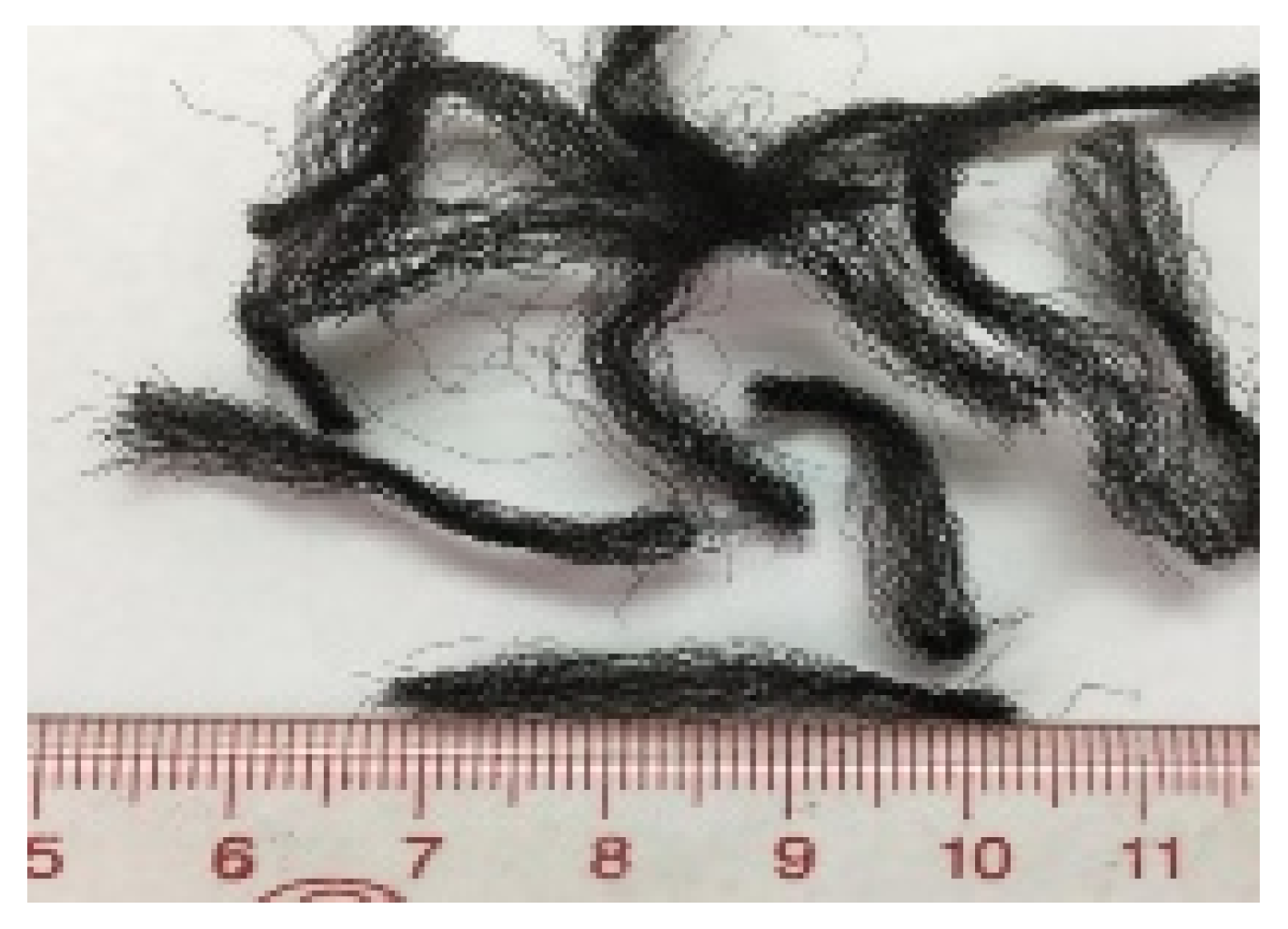
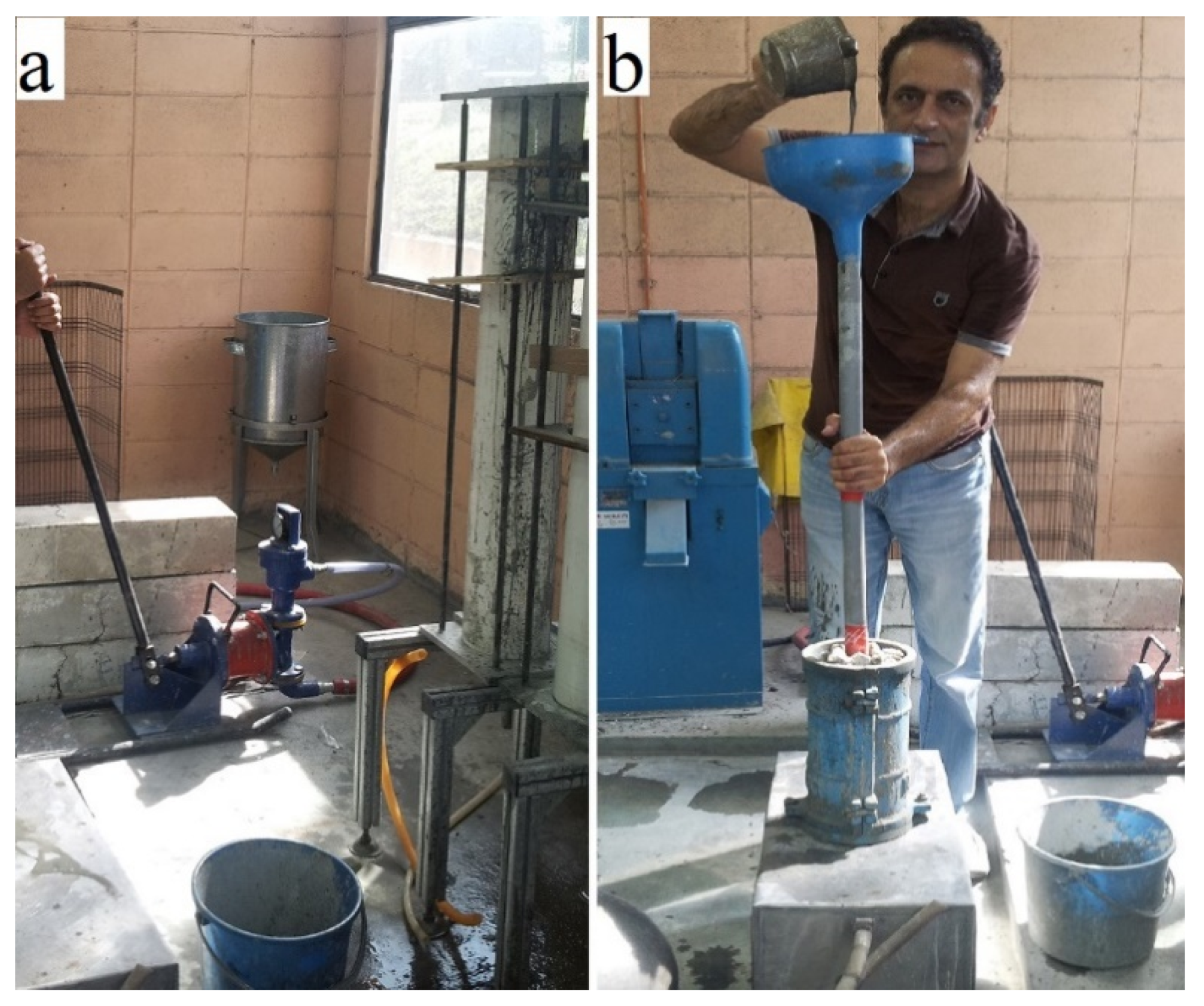
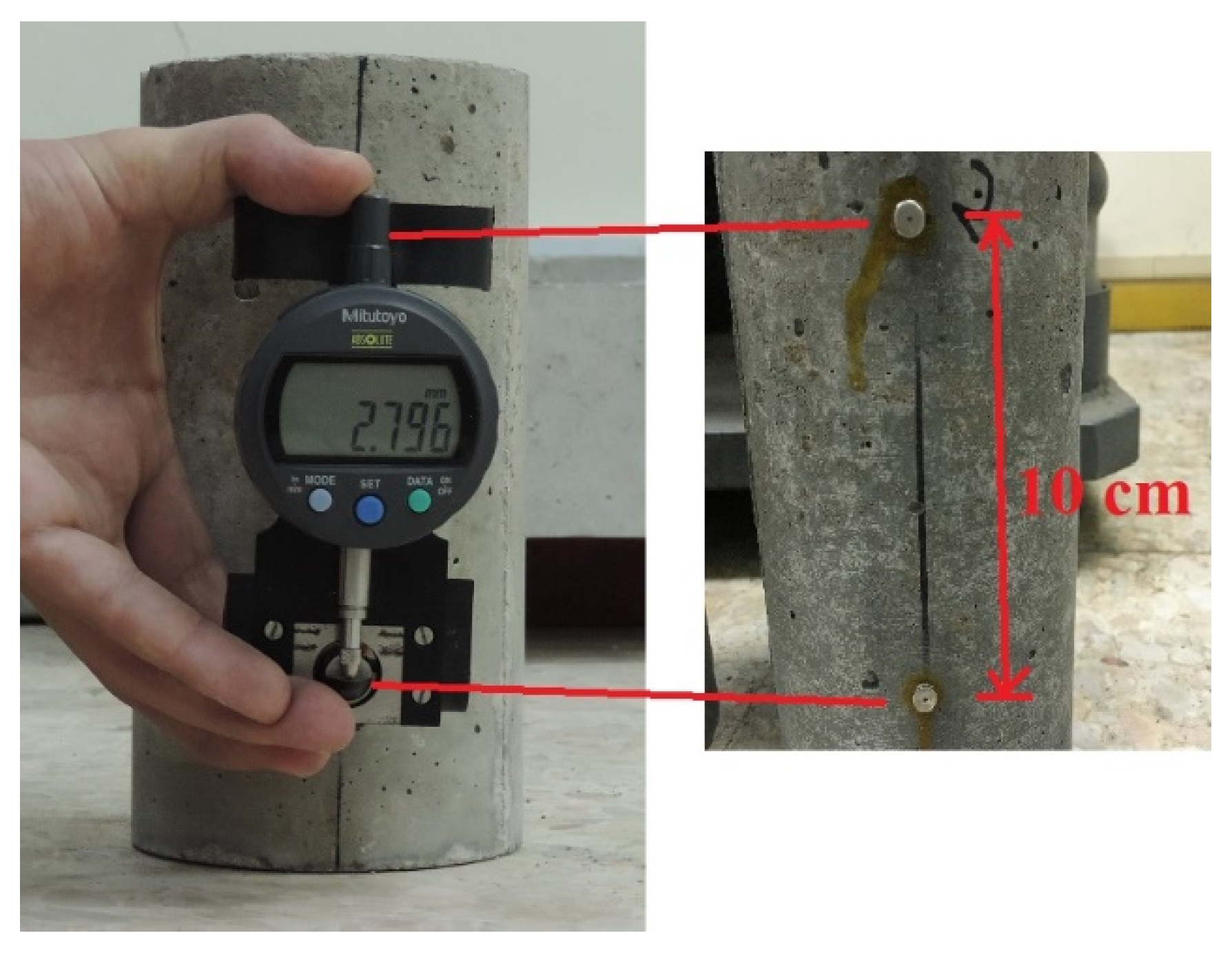
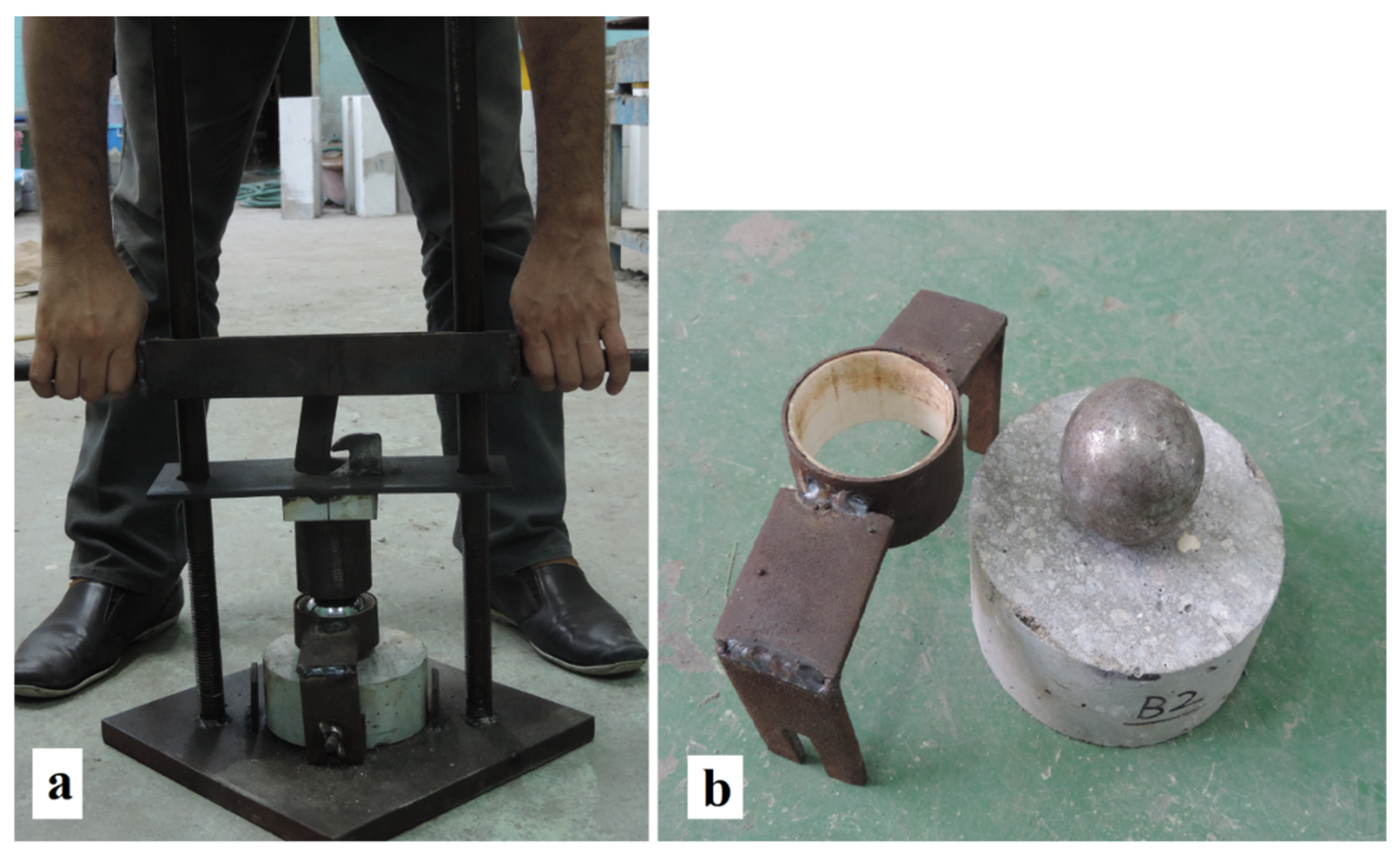
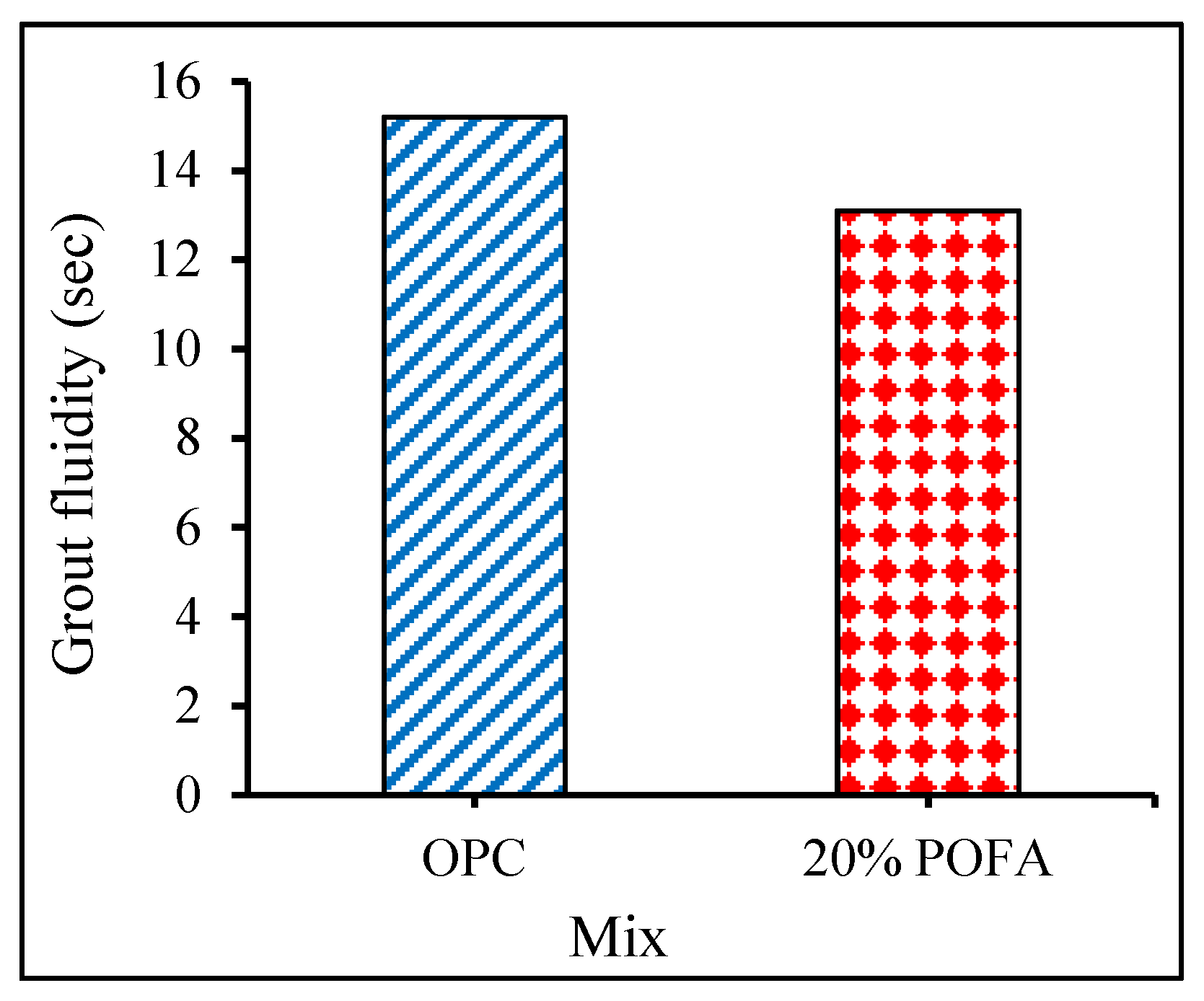
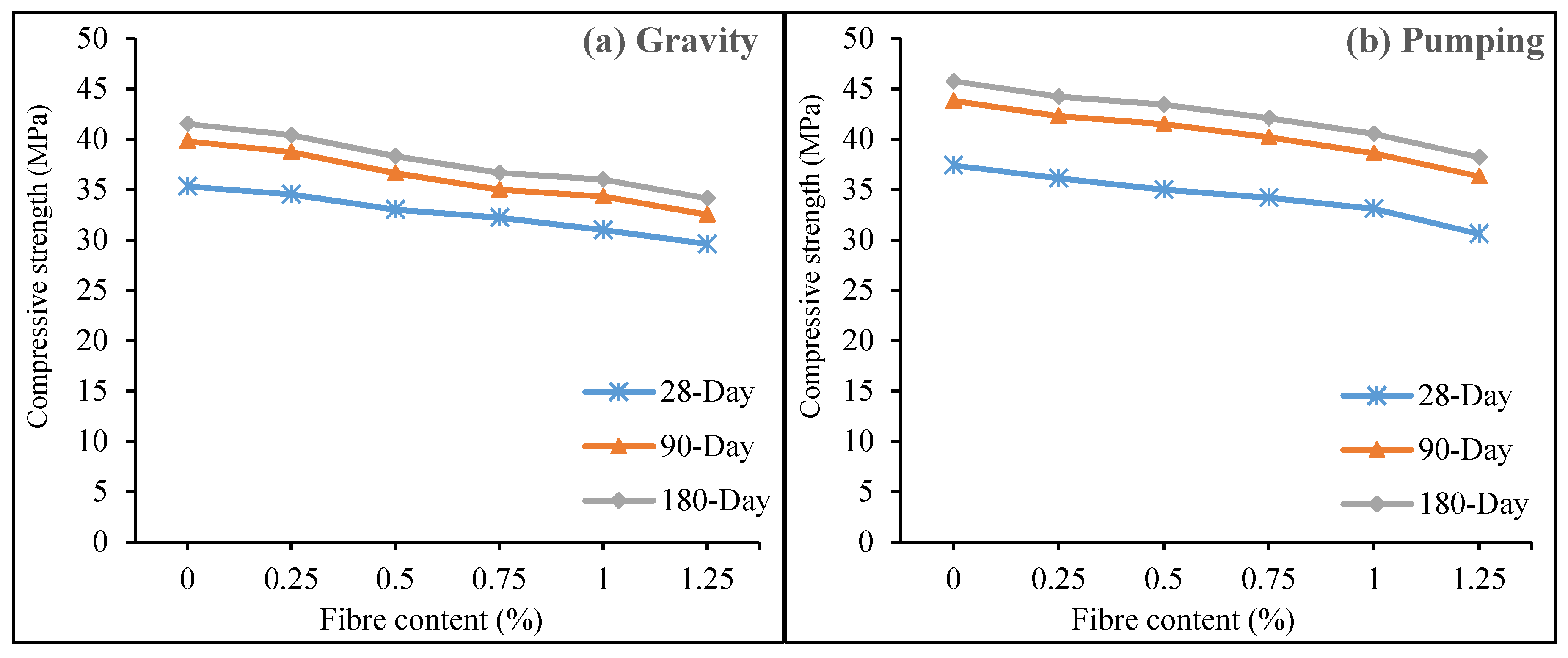
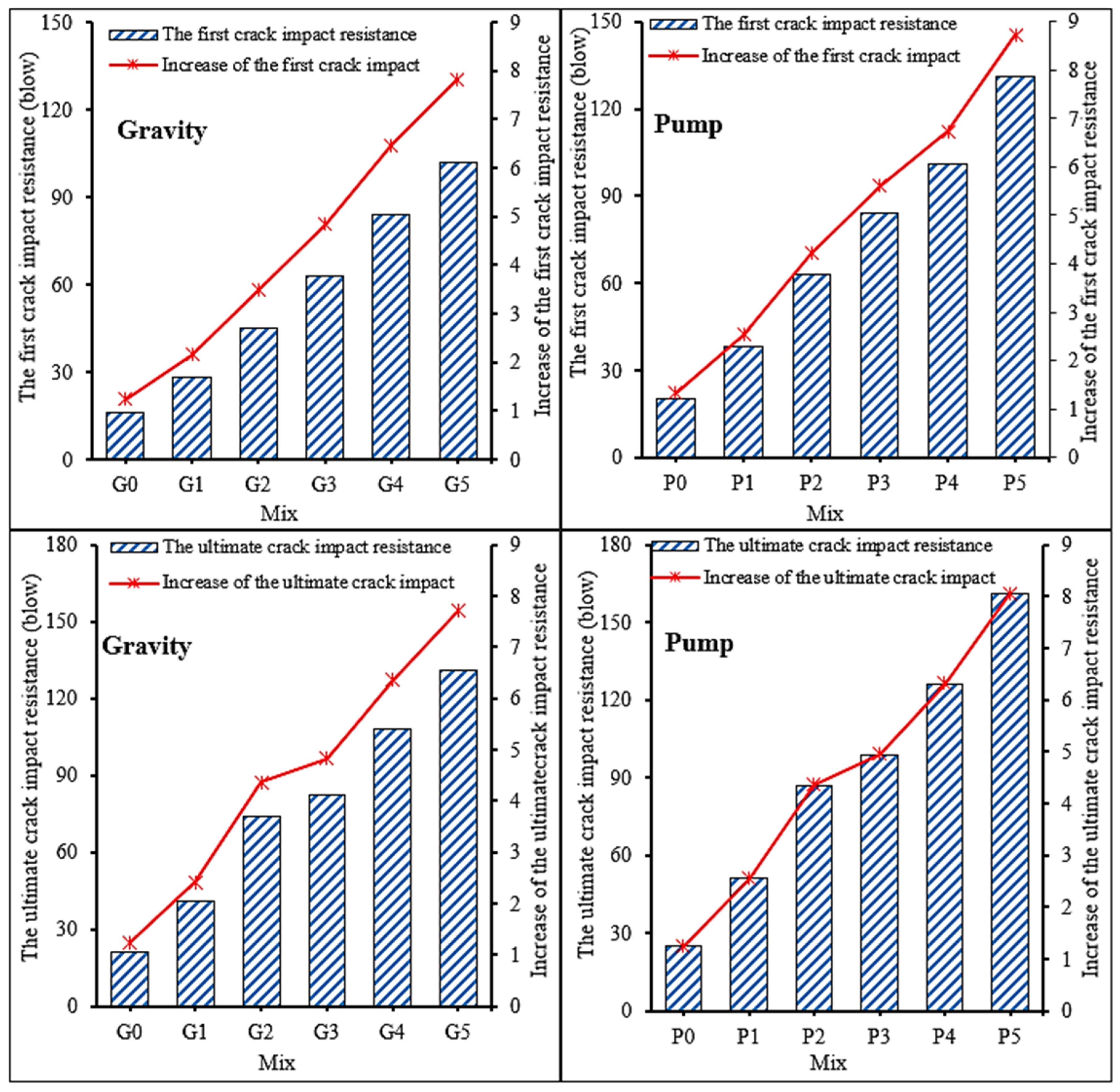
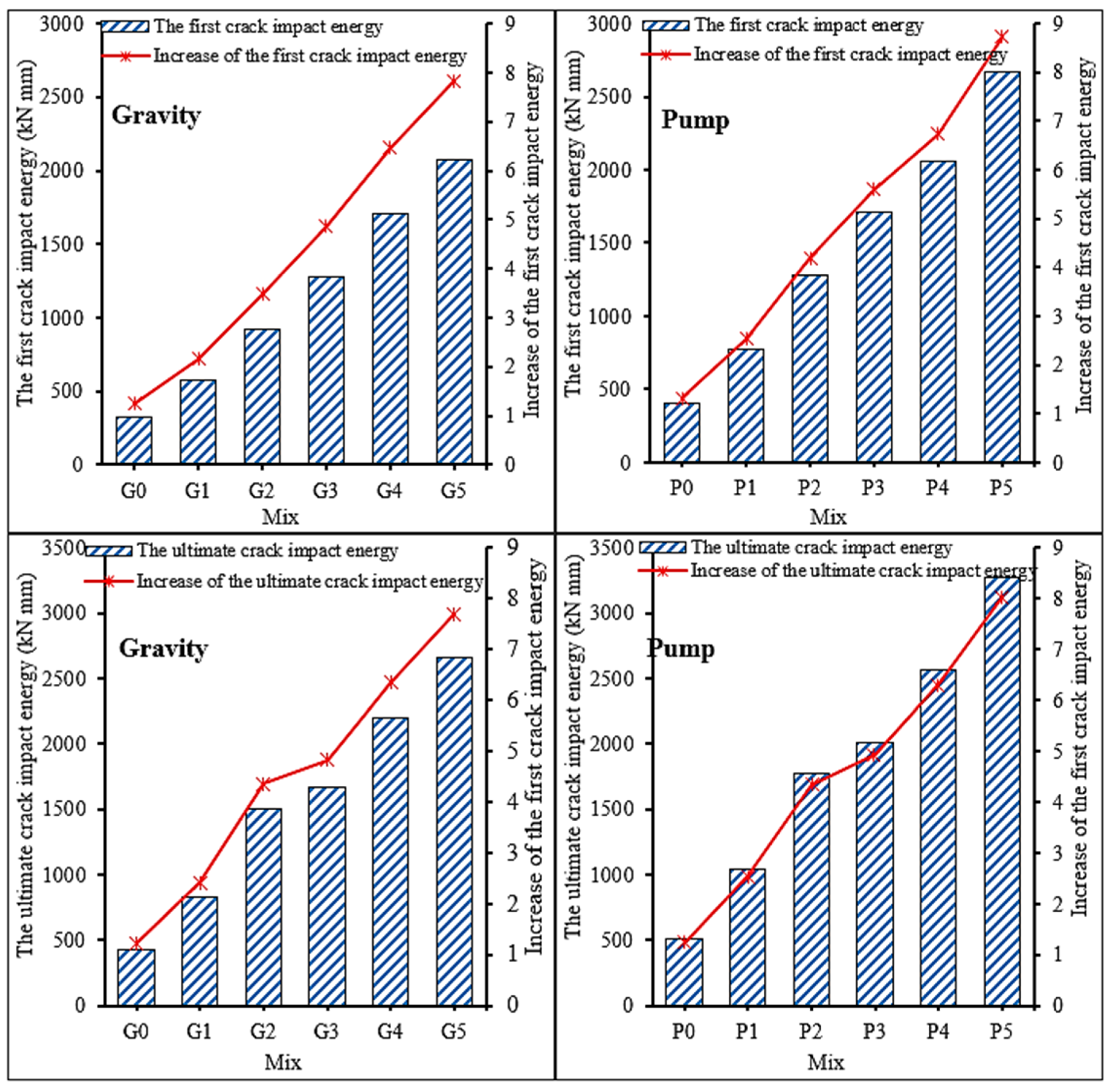
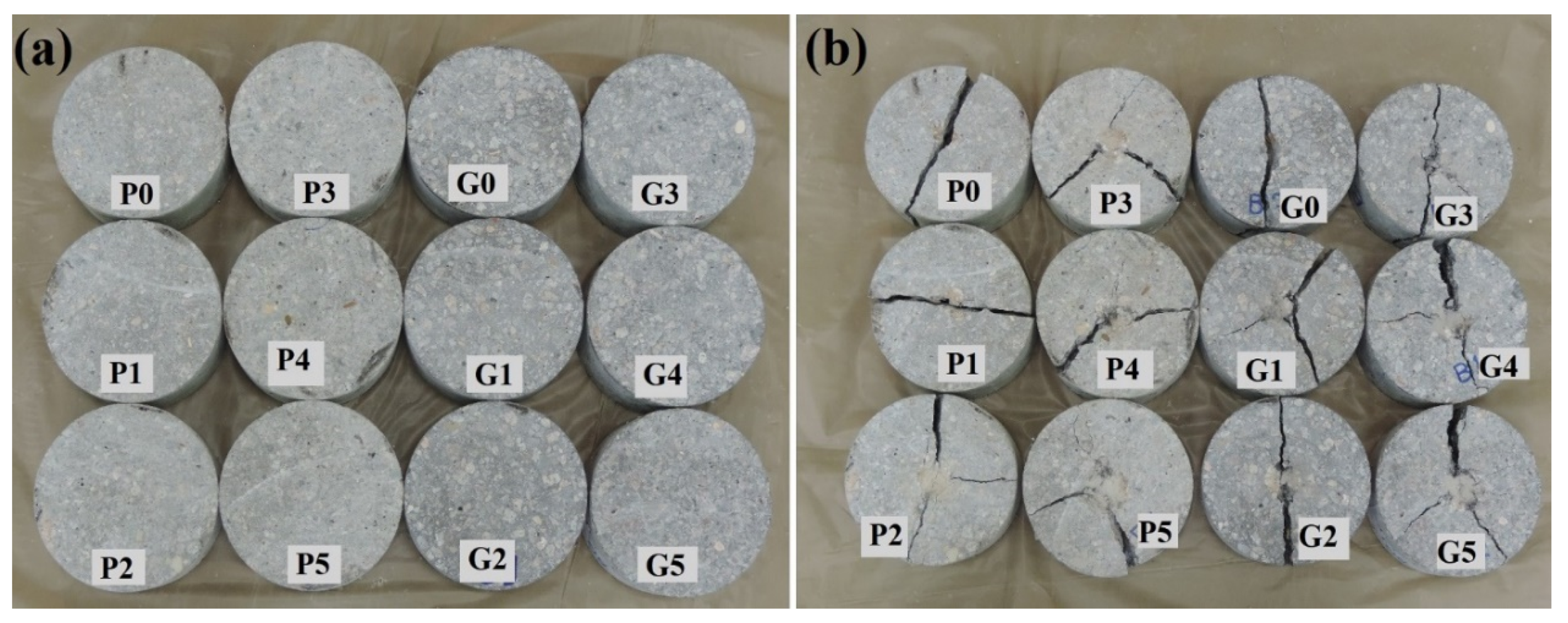
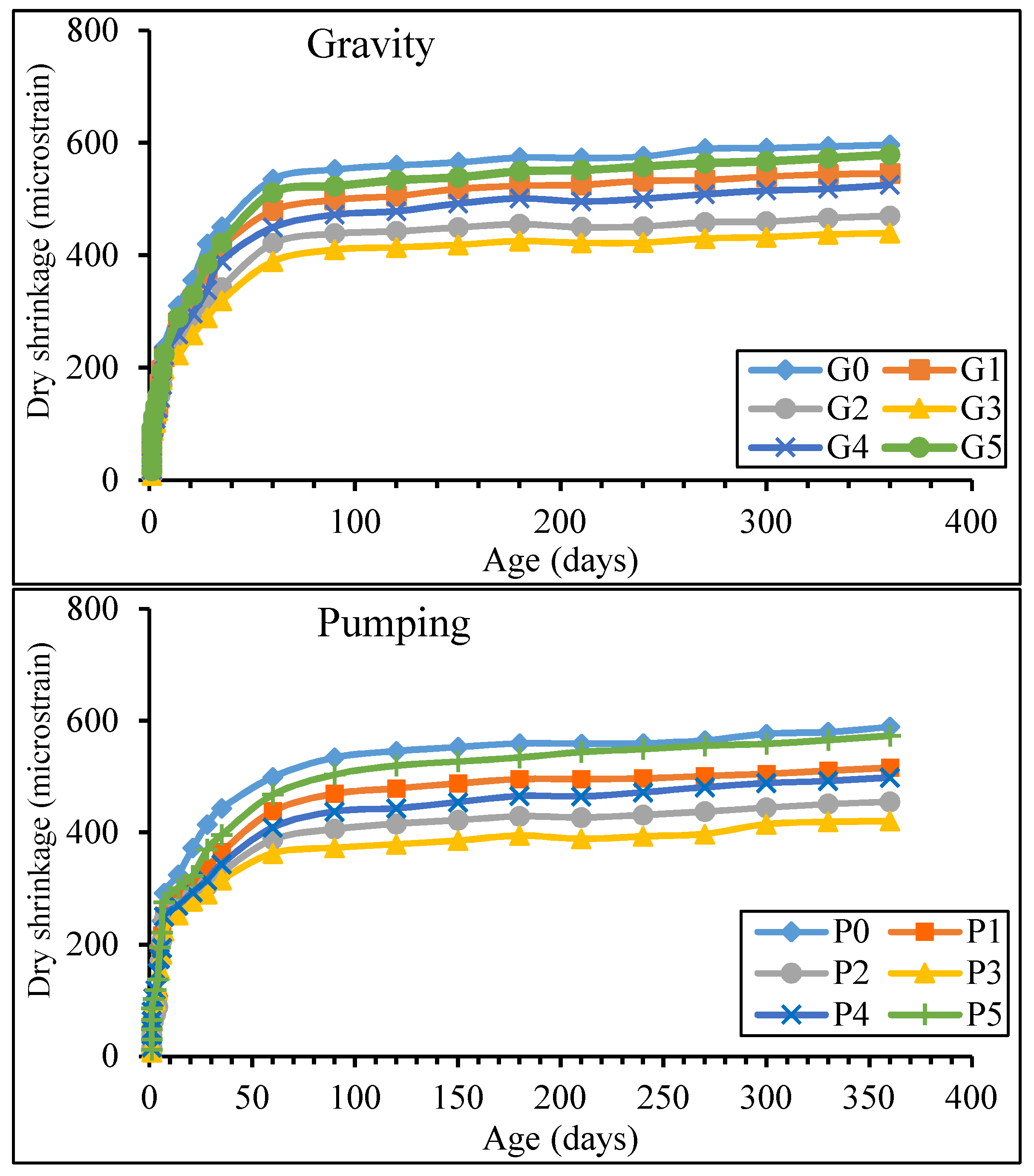

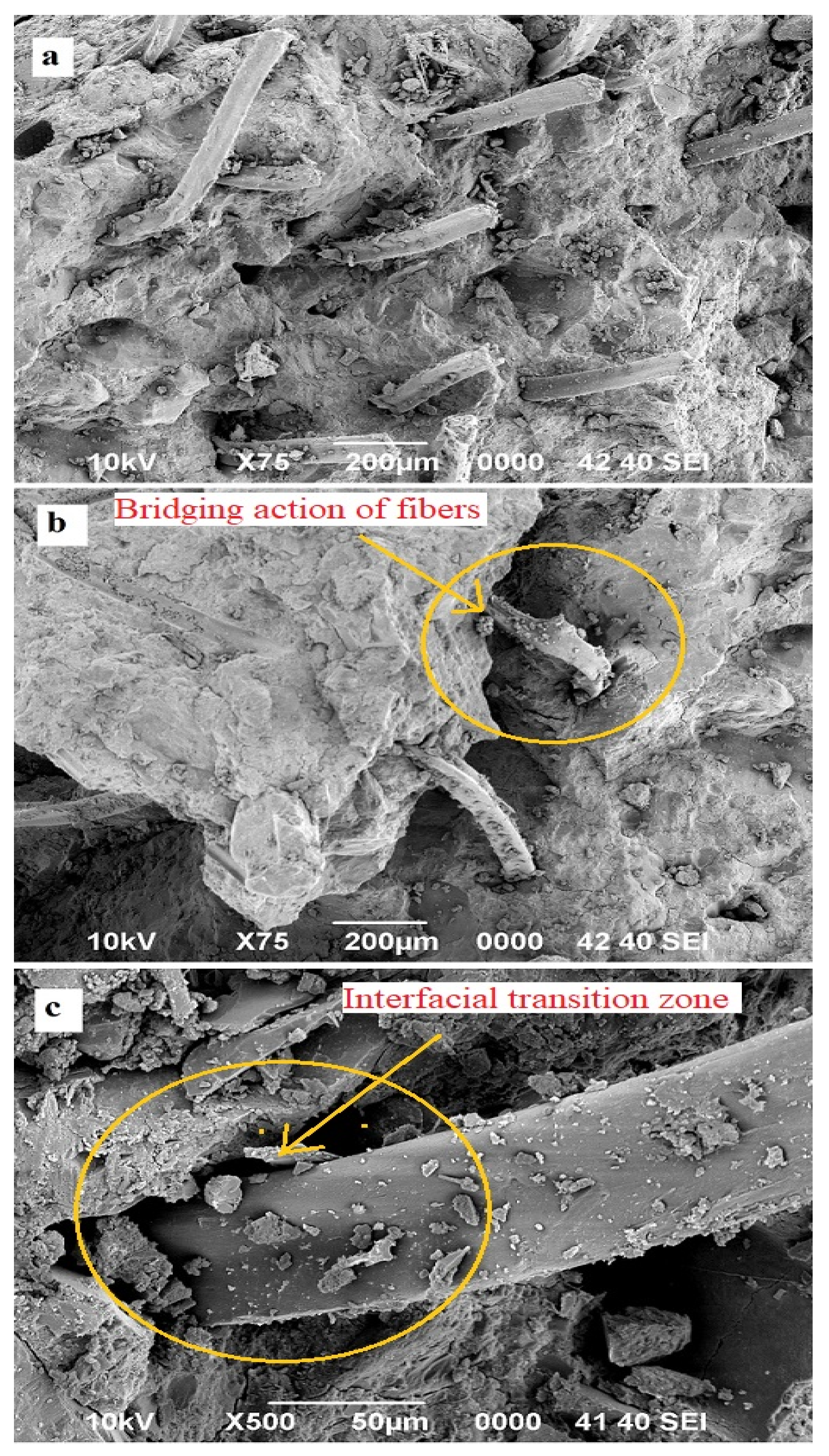

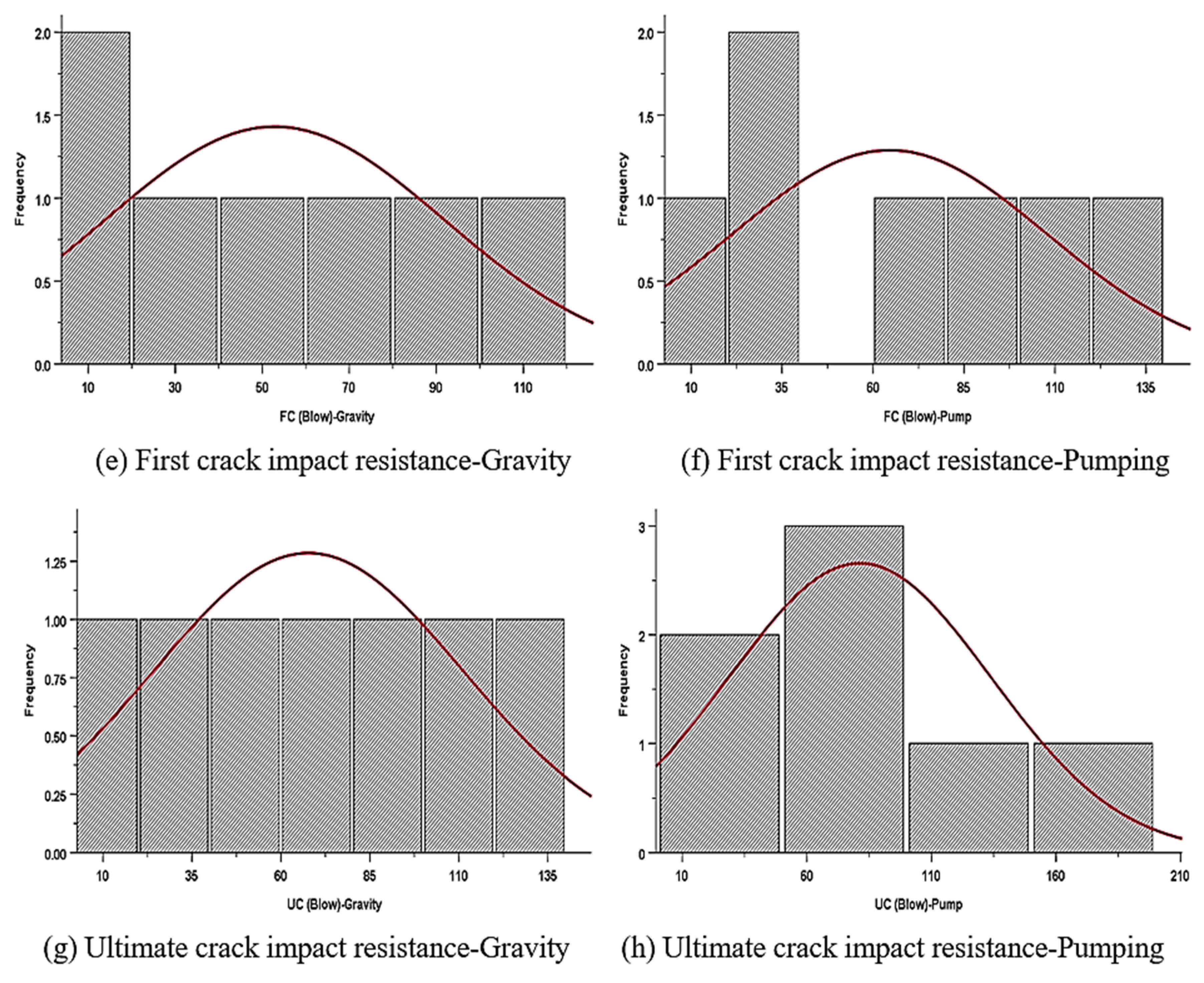
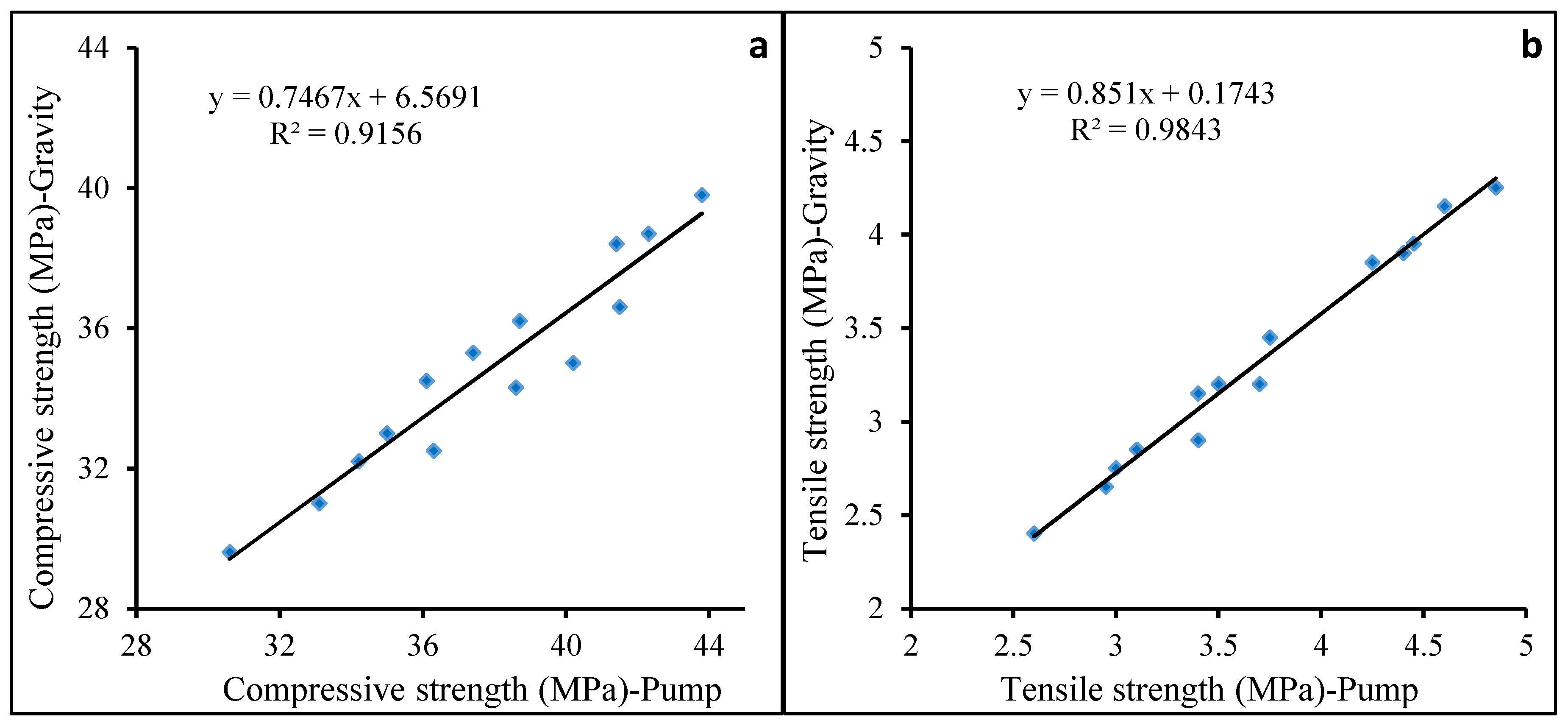
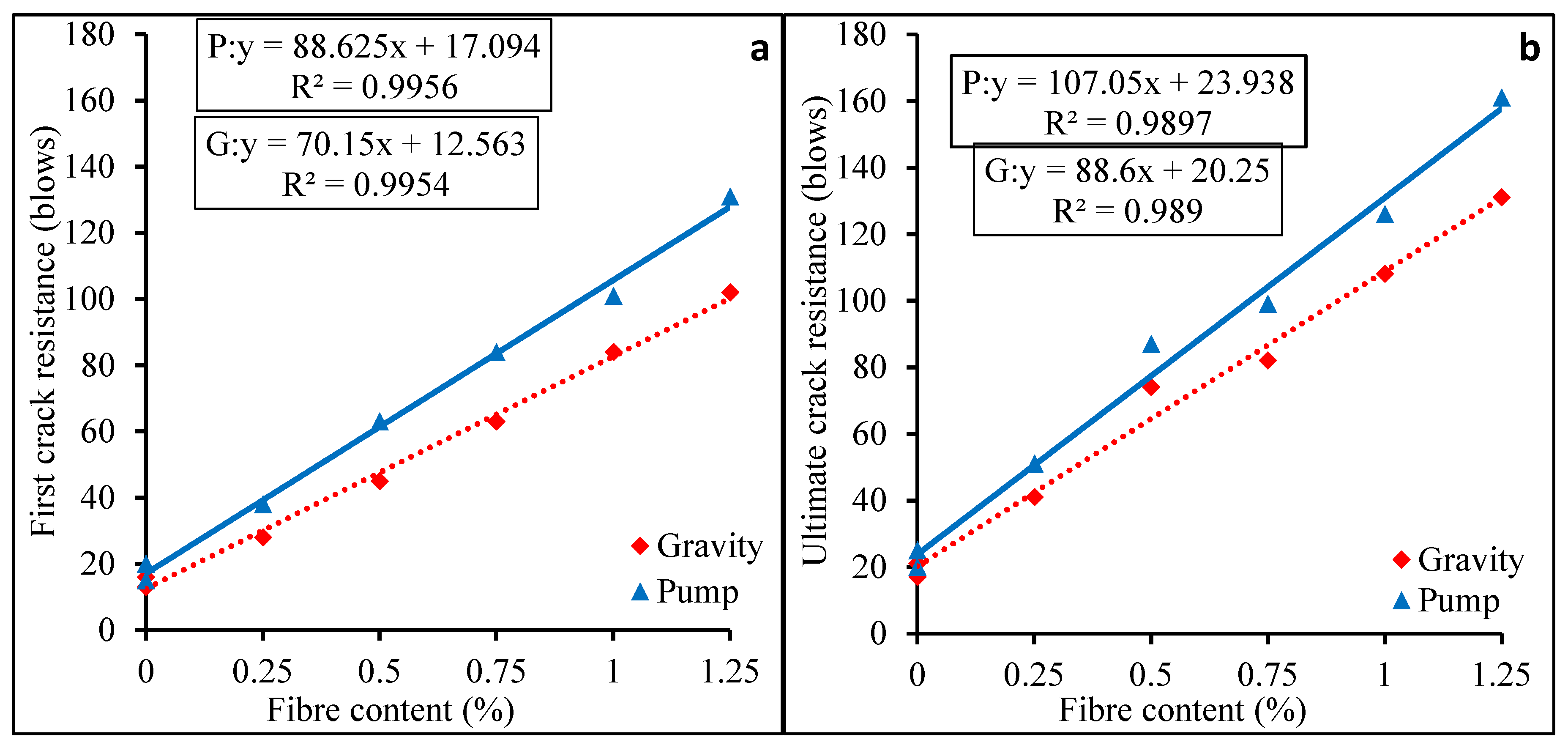
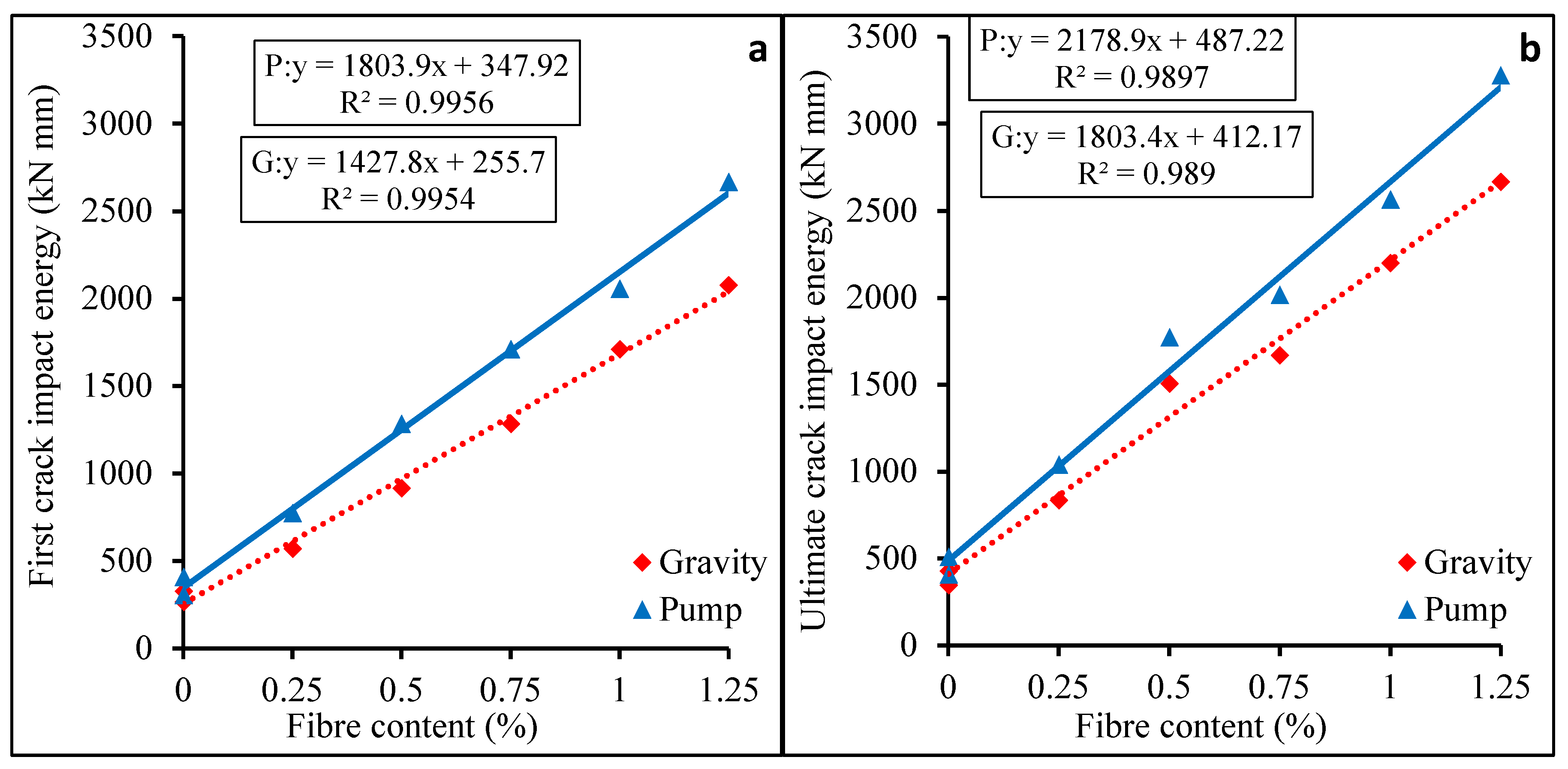
| Composition | OPC (%) | POFA (%) |
|---|---|---|
| SiO2 | 20.40 | 62.60 |
| Al2O3 | 5.20 | 4.65 |
| Fe2O3 | 4.19 | 8.12 |
| CaO | 62.39 | 5.70 |
| MgO | 1.55 | 3.52 |
| K2O | 0.005 | 9.05 |
| SO3 | 2.11 | 1.16 |
| LOI | 2.36 | 6.25 |
| Physical properties | ||
| Specific gravity | 3.15 | 2.42 |
| Blaine fineness (cm2/g) | 3990 | 4930 |
| Soundness (mm) | 1.0 | 2.0 |
| Waste PP Fibre | Length (mm) | Diameter (mm) | Density (kg/m3) | Melting Point (°C) | Tensile Strength (MPa) | Reaction with Water |
|---|---|---|---|---|---|---|
| Multi-filament polypropylene | 30 | 0.45 | 910 | 170 | 400 | Hydrophobic |
| Mix | Water (kg/m3) | Cement (kg/m3) | POFA (kg/m3) | Fine Aggregate (kg/m3) | Coarse Aggregate (kg/m3) | Vf (%) | |
|---|---|---|---|---|---|---|---|
| G0 | 186 | 304 | 76 | 545 | 1320 | 0.0 | |
| Gravity | G1 | 186 | 304 | 76 | 545 | 1320 | 0.25 |
| G2 | 186 | 304 | 76 | 545 | 1320 | 0.50 | |
| G3 | 186 | 304 | 76 | 545 | 1320 | 0.75 | |
| G4 | 186 | 304 | 76 | 545 | 1320 | 1.00 | |
| G5 | 186 | 304 | 76 | 545 | 1320 | 1.25 | |
| P0 | 186 | 304 | 76 | 545 | 1320 | 0.0 | |
| Pump | P1 | 186 | 304 | 76 | 545 | 1320 | 0.25 |
| P2 | 186 | 304 | 76 | 545 | 1320 | 0.50 | |
| P3 | 186 | 304 | 76 | 545 | 1320 | 0.75 | |
| P4 | 186 | 304 | 76 | 545 | 1320 | 1.00 | |
| P5 | 186 | 304 | 76 | 545 | 1320 | 1.25 |
© 2020 by the authors. Licensee MDPI, Basel, Switzerland. This article is an open access article distributed under the terms and conditions of the Creative Commons Attribution (CC BY) license (http://creativecommons.org/licenses/by/4.0/).
Share and Cite
Alrshoudi, F.; Mohammadhosseini, H.; Alyousef, R.; Md. Tahir, M.; Alabduljabbar, H.; Mustafa Mohamed, A. The Impact Resistance and Deformation Performance of Novel Pre-Packed Aggregate Concrete Reinforced with Waste Polypropylene Fibres. Crystals 2020, 10, 788. https://doi.org/10.3390/cryst10090788
Alrshoudi F, Mohammadhosseini H, Alyousef R, Md. Tahir M, Alabduljabbar H, Mustafa Mohamed A. The Impact Resistance and Deformation Performance of Novel Pre-Packed Aggregate Concrete Reinforced with Waste Polypropylene Fibres. Crystals. 2020; 10(9):788. https://doi.org/10.3390/cryst10090788
Chicago/Turabian StyleAlrshoudi, Fahed, Hossein Mohammadhosseini, Rayed Alyousef, Mahmood Md. Tahir, Hisham Alabduljabbar, and Abdeliazim Mustafa Mohamed. 2020. "The Impact Resistance and Deformation Performance of Novel Pre-Packed Aggregate Concrete Reinforced with Waste Polypropylene Fibres" Crystals 10, no. 9: 788. https://doi.org/10.3390/cryst10090788
APA StyleAlrshoudi, F., Mohammadhosseini, H., Alyousef, R., Md. Tahir, M., Alabduljabbar, H., & Mustafa Mohamed, A. (2020). The Impact Resistance and Deformation Performance of Novel Pre-Packed Aggregate Concrete Reinforced with Waste Polypropylene Fibres. Crystals, 10(9), 788. https://doi.org/10.3390/cryst10090788





